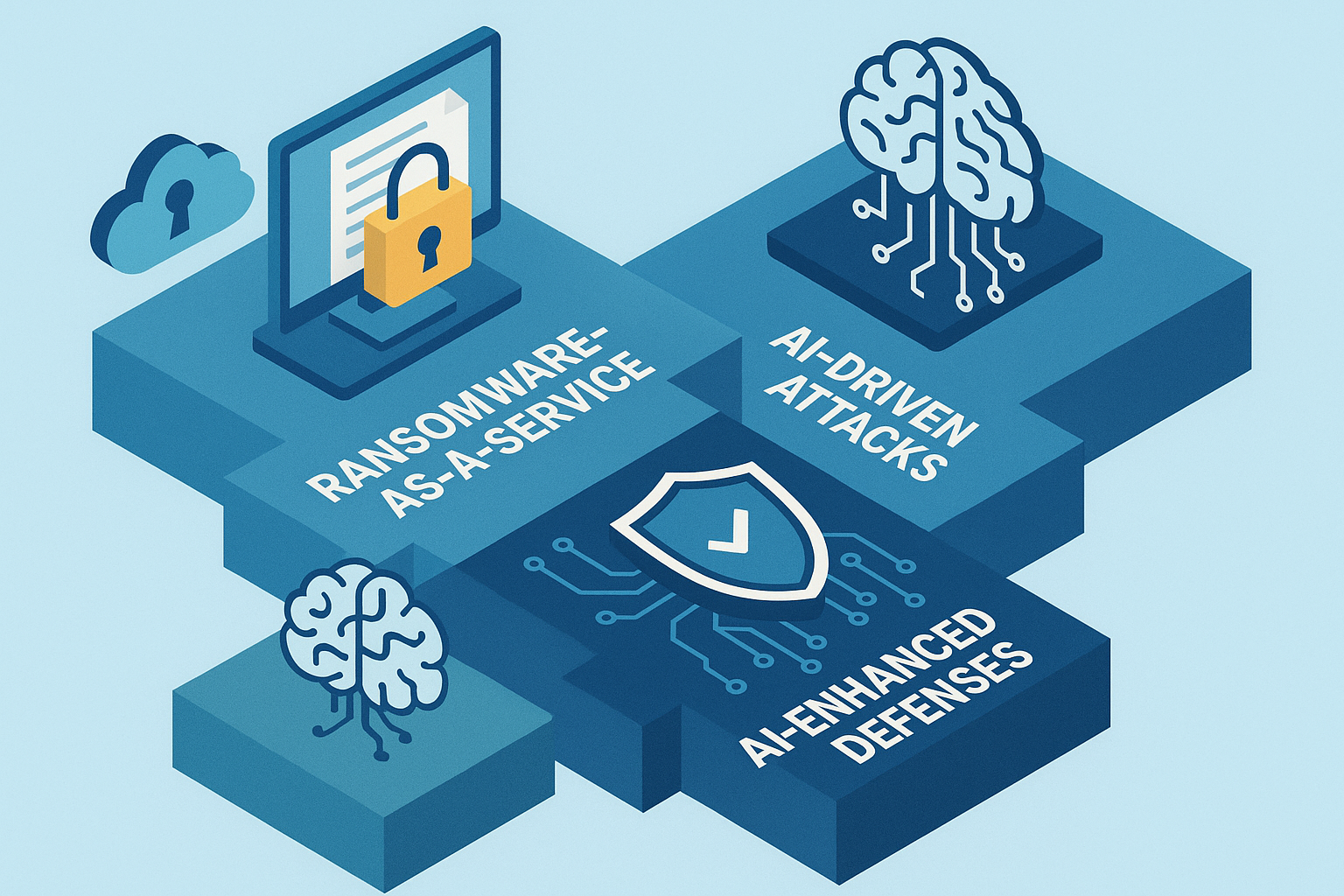The Cybersecurity Landscape in 2025: A Year of Ransomware Evolution and AI-Driven Threats
Ransomware Revolution and Rising Threats
In a year that has often felt like a never-ending battle between cybersecurity defenders and the relentless tide of attackers, 2025 has marked a significant shift in the cyber threat landscape. The rise of Ransomware-as-a-Service (RaaS) and the increasing focus on data exfiltration have converted the traditional ransomware model from mere data encryption to a dual-threat strategy, where attackers now steal sensitive data and use the threat of public exposure to extort their victims.
This evolution not only highlights the growing sophistication of cyber threats but also underscores the pressing need for robust cybersecurity measures in an era where data is increasingly valuable and vulnerable.

The Rise of AI in Cybersecurity
One of the most intriguing aspects of the current cybersecurity landscape is the increasing role of artificial intelligence (AI). While AI has long been touted as a potential game-changer in cybersecurity, its impact is now being felt in both positive and negative ways. On the defensive side, AI is being used to enhance threat detection and incident response, allowing security teams to respond more quickly and effectively to emerging threats. However, the same AI technologies are also being leveraged by attackers to launch more sophisticated and targeted attacks, often using AI-powered tools to evade detection and exploit vulnerabilities.
The irony of AI’s dual role in cybersecurity is not lost on industry observers. While AI can significantly enhance cybersecurity defenses, it also lowers the barrier to entry for attackers, allowing them to launch complex attacks with minimal technical expertise. This has been particularly evident in the rise of AI-driven ransomware attacks, where attackers can now use machine learning algorithms to tailor their attacks to specific targets and evade traditional security measures.
Context and Challenges
The geopolitical and regulatory context of these developments is equally complex. As governments around the world grapple with the challenges of cybersecurity, there is a growing recognition of the need for coordinated action and robust regulations to protect critical infrastructure. The recent addition of new vulnerabilities to the CISA catalog highlights the ongoing struggle to keep pace with the evolving threat landscape.
Furthermore, the increasing role of AI in state-sponsored attacks and disinformation campaigns adds a layer of geopolitical tension to the cybersecurity challenge, underscoring the need for international cooperation and standards.
AI’s Ethical Debates
Beyond the immediate security implications, the integration of AI into cybersecurity raises important ethical questions. As AI becomes more pervasive, there is a growing need for transparency and accountability in AI decision-making processes. The development of explainable AI (XAI) is a step in this direction, aiming to increase trust in AI systems by making their decision-making processes more understandable.
However, the ethical implications of AI in cybersecurity are far-reaching, and the industry is only beginning to grapple with the challenges of ensuring that AI systems are used responsibly and ethically.
Conclusion
As we look to the future of cybersecurity in an era dominated by AI-driven threats, it’s clear that the stakes are higher than ever. The shift from data encryption to data exfiltration represents a significant escalation in the cybersecurity arms race, and the role of AI in both defending and attacking systems adds a layer of complexity that is both fascinating and terrifying. So, should we start preparing for a future where AI-driven cyberattacks are the norm, or will we find a way to harness AI’s potential to create a safer digital landscape? Perhaps the most pressing question is: Are we ready for the day when AI systems start demanding ransoms?



